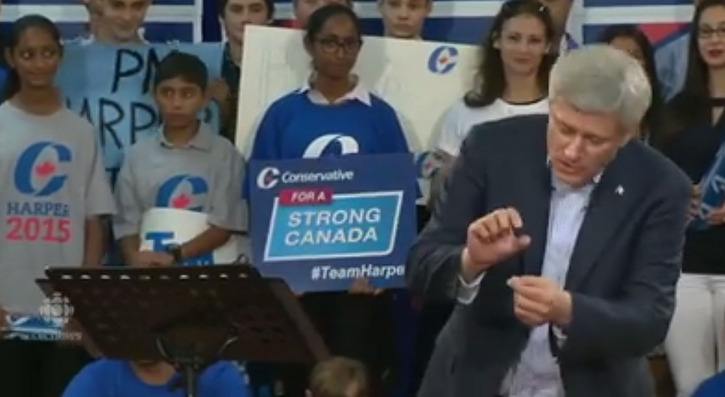I first met Stephen Harper when he was running for the Canadian Alliance leadership in 2002.
Speaking to a group of Fraser Valley party members concerned that the party had split over the leadership of Stockwell Day, Harper didn’t mince words just because a local reporter had showed up on a Saturday morning. He explained his prediction that no matter who leads the conservative movement started by Preston Manning, the national media would work against it.

“The press is owned by big-L liberals and staffed by small-L liberals,” Harper said. “Preston was too cerebral; Stock was not cerebral enough. I’m not sure where I will be, but the media will always be on the other side.”
Harper’s cold war with national media is a theme that runs through his decade as prime minister, peaking in 2015 with the most slanted election coverage I’ve ever witnessed. The celebration continues over Justin Trudeau’s victory, with the supposedly non-partisan federal bureaucracy cheering along with much of the national media.
Harper’s assessment of major newspaper ownership is no longer accurate, except for the Toronto Star. But the dying tradition of owners looking up from their accounting ledgers to endorse a political party continued, with the Postmedia chain and the Globe and Mail pointing out that Trudeau’s rash promises didn’t add up.
Endorsements were a brief interruption in the media assault on Harper’s record. His government’s plan to welcome 10,000 refugees, unveiled way back in January 2015, was portrayed as heartless and feeble, while Trudeau’s 25,000 by Christmas represented the generous character of the true Canada.
As it turns out, the Liberals backed off to a promised 10,000 by the end of 2015, and missed that by 75 per cent. But they’ve put out a rash new promise to make it 50,000 at some point in the future, so the media’s new-found message of sunshine, hope and change continues.
Those modest $10 billion annual deficits that Trudeau promised, and Harper warned against? Borrowing and spending will far exceed that, but we’re assured that’s because they were based on inflated Conservative financial forecasts.
In fact, independent private sector forecasts are now the key reference for government budgets at the federal and provincial level. None of them predicted the further slump in energy prices that continued through 2015.
And cooking the books before an election isn’t really possible any more, thanks to the establishment of the Parliamentary Budget Office. That was a Harper innovation, along with scheduled elections.
And that Trudeau pledge to raise taxes on the wealthiest Canadians and use the proceeds to finance a tax cut for the middle class? That one didn’t add up either. For one thing, wealthy people have a variety of legal ways to reduce their taxable income.
Here’s an actual front-page headline from the Globe and Mail, reporting this unfortunate fact, well after the election: “The way Liberals gauged response to new tax rate explains gap.” So it was just an understandable oversight, you see.
Trudeau’s star turn in Paris, where he pronounced that “Canada is back” in the battle to control the world’s weather? The official submission from his bloated delegation to the UN climate meetings was actually the existing Conservative plan, which includes phasing out coal-fired electricity generation.
Harper generally represented a preference for the individual over the state, a concept that at one time was known as “liberalism.” This was illustrated by his preference for parents rather than a nanny state to administer child care.
He advocated free trade, small government and low taxes. We’ll see how that legacy survives the new government and its media cheering section.
Tom Fletcher is legislature reporter and columnist for Black Press. Email: tfletcher@blackpress.ca Twitter: @tomfletcherbc
